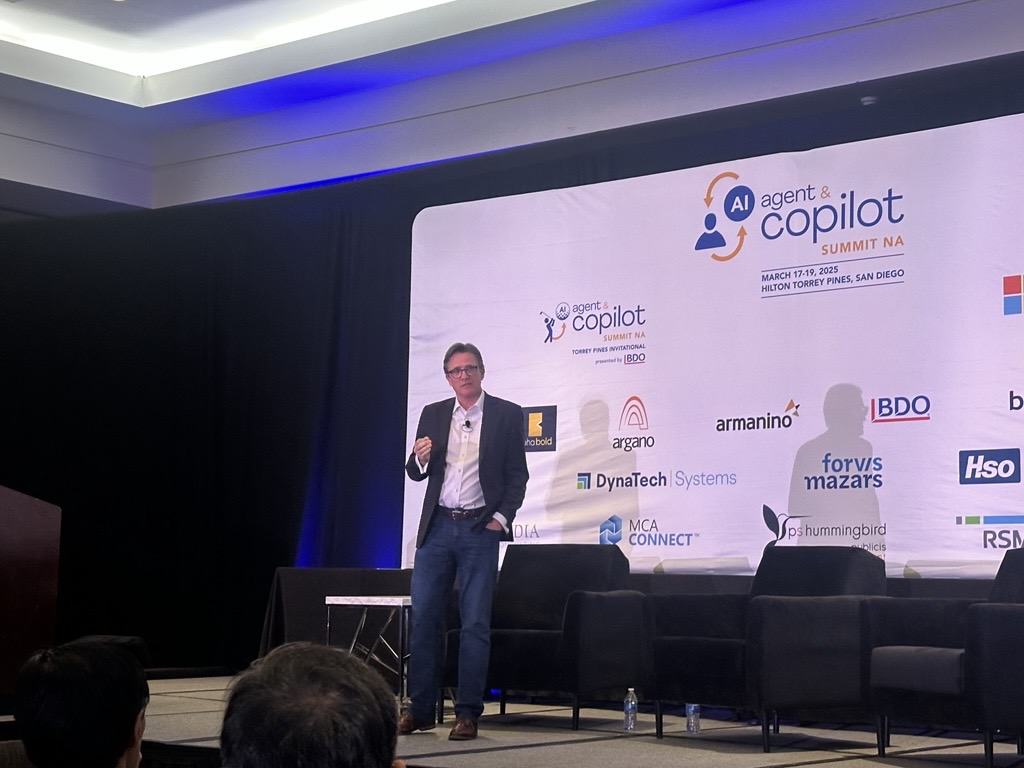AI Agent and Copilot Conference: Boosting AI Implementation, Integration, and Business Efficiency

Insights from the AI Agent & Copilot Summit
The second day of the AI Agent & Copilot Summit highlighted the fast-paced developments in artificial intelligence (AI), focusing on the roles of copilots and agents in various business contexts. The day began with a keynote presentation by Bryan Goode, Microsoft Corporate Vice President, alongside Bob Evans, the founder of Cloud Wars.
Understanding Copilots and Agents
In his talk, Goode emphasized the distinction between copilots used for personal productivity and agents designed for business processes. He observed that the landscape of AI has shifted dramatically in a short period. Just six to twelve months ago, many companies were deliberating if they should incorporate AI into their operations. Now, the focus has transitioned to seeking effective strategies for integrating agents and copilots to enhance workplace productivity.
Goode made an interesting comparison regarding the speed of technological adoption. He noted that the trajectory for reaching 100 million users has dramatically shortened over time. For instance, it took a long time to achieve this milestone with electricity and telephones, but it was considerably quicker for mobile and social media. AI adoption, he claimed, is moving at an even faster pace and companies must adopt a careful, intentional approach to implementing AI in their workflows.
Early Adoption Insights
Stephen James, CEO of sa.global, provided insights into the company’s early adoption of AI technologies. He expressed that AI aligns with the core vision of what Enterprise Resource Planning (ERP) systems aim to be. Although sa.global initially faced challenges in generating traction from its AI investments, it found a new context for its solutions after the launch of ChatGPT.
James acknowledged the limitless possibilities AI holds but also pointed out a slowing trend in adoption rates. He posed a crucial question for organizations: “How can we assist our clients to close the gap between adoption and technological advancements?”
Presenting AI Use Cases to Leadership
Diane Gardner from Two Pillars Consulting discussed strategies for presenting AI initiatives to the C-Suite and Board of Directors. Senior executives are often torn between the fear of proceeding with AI and the anxiety of falling behind. Gardner emphasized understanding the cultural dynamics of the company and tailoring presentations accordingly.
She shared ten essential points to consider when proposing an AI-use case, which can help address common concerns among decision-makers.
Building Agents and Leveraging Technology
During the day, Microsoft’s Dewain Robinson and AIS’s Prashant Bhoyar explored the practical aspects of developing agents using Copilot Studio and Azure AI Foundry. They discussed how the two platforms differ, highlighting that while Microsoft builds copilots, end-users can create agents. Robinson elaborated on the vision that each employee will have access to a Copilot and that every business will have its own agent, either linked to Copilot or functioning autonomously.
Learning from Partner Insights
Various partners also contributed insights throughout the day. Representatives from Vixxo and Ludia Consulting shared experiences and lessons learned from the rollout of their VITA app. Furthermore, Michael Simms from Columbus and Miyoshi Tokuno from Mad Engine illustrated how AI can transform work, enabling employees to concentrate on higher-level tasks instead of routine activities.
Simms and Tokuno described their successful collaboration that combined generative AI with Azure tools, which significantly reduced project timelines from over six months to mere days.
The Human Element in AI
To conclude the conference, Lambert Hogenhout, Chief of Data and AI at the United Nations, led a thought-provoking discussion on the human experience in an AI-driven world. He stressed the importance of maintaining human authenticity and suggested that being intentional in our use of AI is crucial in leveraging its full potential.
The insights from the summit underscore the significant advancements in AI technology and highlight the ongoing challenges in adoption, integration, and the human aspect of technology development. The momentum is unmistakable, and businesses are now seeking methods to harness AI’s capabilities effectively to drive innovation and productivity forward.





